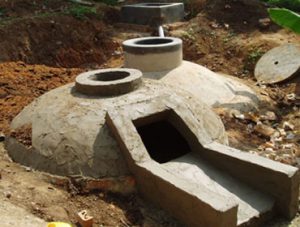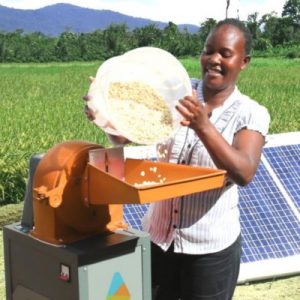
Agriculture
November 9, 2023

Updated on November 9, 2023
·Created on May 23, 2016
The Nopalimex is a biodigester powered by a cactus (nopal) widely found in Mexico.
Nopalimex is a biodigester developed by Miguel Aké entirely powered by nopal, a cactus. The plant benefits from economies of scale and low transport cost, as the crop is grown around the biodigester plant. The biogas produced is used in the factory for making corn and cactus chips, as well as in a gen-set for electricity. Some is cleaned of carbon dioxide and provided as bio-methane, which can be used in modified vehicles.
Market Suggested Retail Price
$2,170,000.00
Target Users (Target Impact Group)
Distributors / Implementing Organizations
Nopalimex is the sole distributor in Mexico. This firm generates gas and electricity using nopal biomass.
Manufacturing/Building Method
Plants are designed and custom-built individually. Nopal plantation is liquefied by a special machine. The resulting pulp is mixed in large tanks with water at 38 degrees C which is the required temperature to break down nopal and release methane. Further treatment with sulphuric acid extracts carbon dioxide, giving the plant a 96% concentration of methane at a production rate of eight tons a day.
Intellectural Property Type
Patent Protected
User Provision Model
Users can obtain the product directly from Nopalimex
Distributions to Date Status
Two plants to date in the town of Zitacuaro, in central Michoacan state, the first to aliment the company 'El Manjar del Campo' that produces tortillas, the second used to fuel the town's vehicle fleet.
Design Specifications
The system includes a well-insulated above-ground container. The biogas digester processes prickly pears (from the cactus) into biomethane. The pears are ground up into a soup, mixed with manure and fermented in a digester. The biogas generated is then cooled to dewater it.
Technical Support
May be provided by the manufacturer
Replacement Components
N/A
Lifecycle
Unknown
Manufacturer Specified Performance Parameters
To convert nopal leaves into a source of usable energy.
Vetted Performance Status
Research was conducted by scientists in Oxford University on the prickly pear cacti and they found that the plant can help produce more food in drought-stricken areas. Since the cacti absorbs high quantities of water, after digestion biogas is made, liquid and solid fertilizer will be left over. This in turn is used to better cultivate crops in areas that could not otherwise support them.
Safety
There are some dangers associated with biogas, including fire hazard, explosion, gas leaks, and negative pressure.
Complementary Technical Systems
None
Academic Research and References
Fernandez J. L. A., 2015, Producción de biogás con nopal, IIE.
Aké, M., 2017, Biogás con nopal para vehículos en sustitución de combustibles fósiles, México
Compliance with regulations
None
Other Information
The biodigestor was developed with expert advice from the National Polytechnic Institute of Mexico, the Autonomous University of Chapingo and the Electric Power Research Institute. Expert advisors have indicated that the good economics depend on having a good quality feed material easily accessible - in this case nopal (prickly pear).

Agriculture
November 9, 2023

Agriculture
November 9, 2023

Agriculture
November 9, 2023

Agriculture
November 9, 2023

Agriculture
November 9, 2023

Agriculture
November 9, 2023

Agriculture
November 9, 2023

Agriculture
November 9, 2023

Agriculture
November 9, 2023

Agriculture
November 9, 2023
Have thoughts on how we can improve?
Give Us Feedback
Nopalimex is a biogas digester that processes prickly pears into
biomethane. The pears are ground up into a soup, mixed with manure and
fermented in a digester. The biogas generated is then cooled to dewater it. The gas is also used in the factory for making corn and cactus
chips, as well as in a genset for electricity. Some is cleaned of carbon
dioxide and provided as biomethane, which can be used in modified
vehicles.
It is not clear what the biogas digester is made from, but the picture shows a well insulated above ground container, so it is probably made from steel. The plant benefits from economies of scale and also no transport cost, as the crop is grown around it.
The Nopalimex plant wortks well on the site for which it was made. There are minimal transport costs and economies of scale. They claim an electrcity cost less than half of that supplied by the electrcity grid.
It is not clear how many other sites would be suitable. The feed material, prickly pear, is very productive and locally available. There are probably several sites in Mexico that would be suitable.
It is a bespoke design, made individually for customers and their particular sites.
The plant seems to be very effective, using the particular feed material that is easily available (prickly pear – nopal). It uses a “standard” approach, of crushing the feed material, mixing it with dung and putting it in a steel tank CSTR. The good economics depend on having a good quality feed material easily accessible.